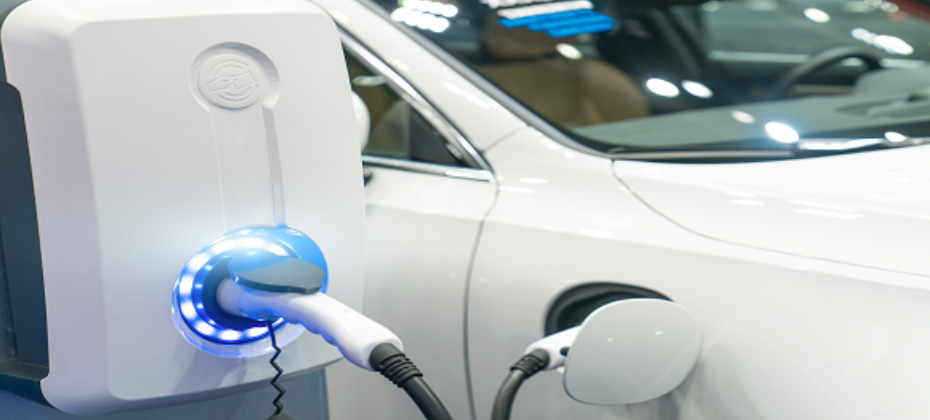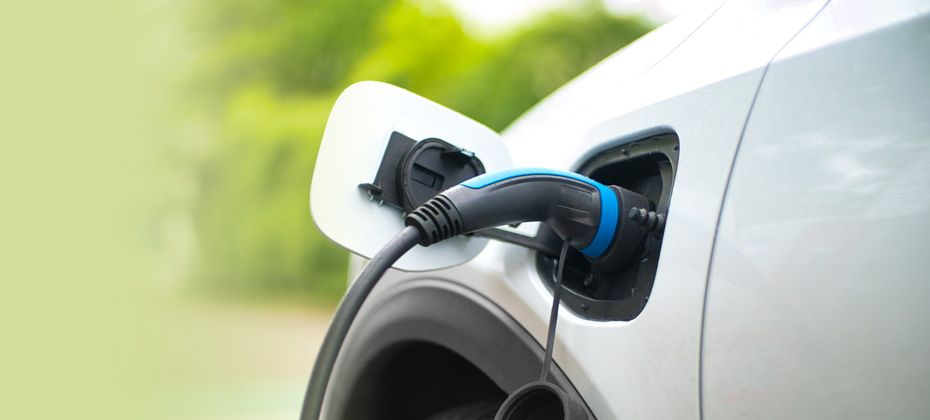
Automotive Blog
Welcome to the Experian Automotive Blog. Keep current on best practices and trending topics for the Auto industry.

The deprecation of third-party cookies is one of the biggest changes to the automotive digital marketing landscape in recent years. Third-party cookies have long been used to track users across the web, which allows advertisers to target them with relevant ads. However, privacy concerns have led to the deprecation of third-party cookies in major browsers, such as Google Chrome and Safari. This change will have a significant impact on automotive marketers, as it will make it more difficult to track users and target them with ads. However, there are several things that auto marketers can do to prepare for the cookieless future. Here are some marketing tips when the cookie deprecates: Focus on first-party data. First-party data is data that you collect directly from your customers, such as email addresses, contact information, and purchase history. This data is more valuable than third-party data, as it is more accurate and reliable. You can use first-party data to create targeted ad campaigns and personalize your marketing messages. Work with a third-party aggregator. Automotive marketers can tackle a cookie-less world by using other sources of consumer data insights. For instance, a third-party data aggregator, like Experian, has access to numerous sources, platforms, and websites. Beyond that, we have access to a vast range of specific consumer data insights, including vehicle ownership, registrations, vehicle history data, and lending data. We take all that information and help marketers segment audiences and predict what consumers will do next. Leverage Universal Identifiers. Universal Identifiers provide a shared identity to identity across the supply chain without syncing cookies. First-party data (such as CRM data) and offline data can be used to create Universal Identifiers. Use contextual targeting and audience modeling. Contextual targeting involves targeting ads based on the content that a user is viewing. Contextual targeting is a privacy-friendly way to target ads and it can be effective in reaching relevant audiences. Utilize Identity Graphs. An identity graph combines Personally Identifiable Information (PII) with non-PIIs like first-party cookies and publisher IDS. Identity graphs will allow cross-channel and cross-platform tracking and targeting. Experian’s Graph precisely connects digital identifiers such as MAIDS, IPs, cookies, universal IDs, and hashed emails to households providing marketers with a consolidated view of consumers’ digital IDs. The deprecation of third-party cookies will be a challenge for auto marketers, but it's also an opportunity to rethink marketing strategies and focus on building stronger relationships with customers. Here are some additional cookieless marketing tips: Start preparing now. Don't wait until the last minute to start preparing for the cookieless future. Start collecting first-party data from your customers now. Be transparent with your customers. Let your customers know what data you are collecting and how you are using it. Make sure that you have their consent to collect and use their data. Be creative with your marketing campaigns. There are several ways to reach your target audience without relying on cookies. Be creative with your marketing campaigns and experiment with different strategies. Sample audience segments include: Consumers in market Loan status In positive equity Driving a specific year/make/model 1000+ lifestyle events such as new baby, marriage, new home Geography, demographics, psychographics To take it to the next level, we can use predictive analytics to go beyond what cookie data could provide by predicting who is ready to purchase a vehicle. For example, an auto marketer may have used cookie data to find buyers who had shown interest in a hybrid sedan, but that’s where it ended. When combining audience segmentation with a predictive model, marketers can target and identify consumers in-market and most likely ready to purchase a specific model. In this way, the data-driven insights from a third-party data provider specializing in automotive insights can replace the cookie-driven approach and take it a significant step beyond. The cookieless future is coming, but marketers who are prepared will be able to succeed. By focusing on first-party data, contextual targeting, and partnerships, auto marketers can reach their target audiences and achieve marketing goals.

In a recent episode of the Used Car Dealer Podcast, host Zach Klempf, sat down with Jim Maguire, Experian’s senior director of product marketing for automotive, to discuss the prevalence of fraud in the automotive industry. During their conversation, Jim highlighted the findings in Experian’s 2023 Identity and Fraud Report, giving listeners a deeper understanding into the evolving dynamics of fraud, with data and insights on the current landscape and what actionable strategies dealers can take to prevent it. The episode is now available across all major podcast platforms, click the link below to watch: YouTube For more information on the Used Car Dealer Podcast, visit - https://www.sellyautomotive.com/podcast Facebook - @SellyAutomotive Twitter - @SellyAutomotive LinkedIn - @SellyAutomotive

We already know over 286 million cars and light-duty trucks are in operation in the United States and that 4 out of 10 of those vehicles have been in an accident. That’s over 114 million vehicles on the road that have been in an accident. However, have you ever wondered what happens to a vehicle after it’s been involved in an accident? Does the owner keep the vehicle or get rid of it? If they decide to purchase a different vehicle, how soon after the reported accident do they purchase it? Does the frequency and timing in which an owner household purchases a different vehicle vary based on the accident's severity? Does this vary by other factors, such as vehicle type? If so, what vehicles are owners most likely, and least likely, to dispose of after a reported accident? To answer these questions, we completed an internal 3-year analysis of over 15 million unique VINs from all 50 states, Washington D.C., and Puerto Rico. We created a new detailed report with all the data insights! Check out our complimentary Vehicle Accident & Damage Insights report today!

According to Experian’s State of the Automotive Finance Market Report: Q1 2023, the average interest rate for a new vehicle increased to 6.58%

A funnel describes marketing and sales opportunities because it is the widest at the top and narrowest at the bottom. This is an accurate representation because only a fraction of consumers who enter a sales funnel will become buyers. At the top of the funnel, you find consumers exploring and learning about purchase options. These consumers respond to awareness-based marketing regarding vehicle features or comparisons. They are not typically focused on pricing but rather just learning about options. In the middle of the funnel is where you find customers getting closer to a vehicle purchase. They are evaluating their options, including new versus used, and exploring specific units on consumer sites. These consumers have moved beyond general market awareness and vehicle feature interest and into evaluating what vehicle features meet their needs and what price range and financing options may best suit their budget. During this time, marketing and sales contacts with specific incentives or vehicles of interest-based marketing are effective. Nearing the lower funnel As you near the lower funnel, you will find consumers who are initiating the process with the intent to purchase. These consumers are visiting consumer shopping sites for used vehicle research as well as dealer websites. Used vehicle consumers are visiting Vehicle Detail Pages (VDPs) and viewing vehicle history reports. These lower funnel consumers are exploring trade-in values and trying to put together their vehicle sale and purchase plan. There are many ways lower funnel opportunities interact with the automotive ecosystem. With improvements in digital retailing even when just one small part of the sales process is initiated prior to the consumer visiting the brick-and-mortar store, dealers have an opportunity to capture these lower-funnel consumers. Some effective examples include quick “sell your trade” links or prequalification links on web pages that allow consumers to obtain trade values/trade offers and, in some cases, to get full prequalification for loans. Often these digital retailing features are able to track and communicate to dealers about these lower funnel and fully engaged consumers. Take advantage of lower funnel leads with digital retailing tools As online digital retailing steps become more commonplace, dealers will find themselves leveraging these leads for sales. Utilizing effective, consumer-friendly, and secure functions that allow consumers to access or work through the components of a sale will maximize engagement. Keeping consumers tied to your website during the process can keep them working with your dealership processes. To learn how Experian Automotive can help you gain lower funnel opportunities, contact Mike Costanzo.

Dealers are always looking for reasons to connect with consumers. From back-to-school or graduation specials to holiday offers, dealers leverage seasonal and routine aspects of daily life to connect with consumers. Tax season offers a unique annual opportunity to position your vehicles and dealership for purchase by a consumer expecting a tax refund. In many cases, even consumers not receiving a hefty tax refund will be receptive to the tax time message. With the right strategy, message, and audience, you can market to consumers who are a few thousand dollars richer! Consider a tax refund match program Even if you are not in a position to offer consumers extraordinary sales offers, you may be able to create some special dealership-level seasonal offers that take your tax refund message to the next level. For example, offering a Tax Refund match program that offers consumers a discount off a vehicle matching the tax refund applied as a down payment would surely make your dealership stand out! Target consumers with service incentives What about consumers who did not expect refunds or have already spent them? Perhaps offering service incentives such as offering free tax filing software with the purchase of a prepaid service plan would be appealing. Or simply incentivize consumers to receive a discount coupon book during tax season to lighten the burden tax season brings.Tax season often sets the stage for the spring and summer vehicle sales season. Setting the stage by offering service incentives and tax refund matching programs creates rapport with your consumers that you can build upon. Start developing more effective marketing strategies The Experian Marketing Engine (EME) gives dealers and agencies the ability to build effective marketing plans by providing comprehensive market analysis along with powerful audience list creation. Tax time is just one of many messages dealers can deploy utilizing EME's solutions. At Experian Automotive, we leverage our world-class data set to give our dealer and agency clients unparalleled information to market effectively. If you find this topic interesting, you should read one of our others blogs, How to Effectively Use Audiences for Traditional and Online Marketing.

Experian Automotive has just released electric vehicle data insights in our 2022 Electric Vehicle Year In Review infographic.

Experian’s State of the Automotive Finance Market Report: Q4 2022 found that the year-over-year (YOY) average new loan amount increased 4.04%, a smaller growth rate compared to 12.46% YOY in Q4 2021

Pickup trucks have long been a staple of the automotive industry, and the data show this is still the case—even seeing some growth in the third quarter of 2022. Experian’s Automotive Consumer Trends Report: Q3 2022 took a deeper dive into pickup trucks and found they accounted for 20.4% of new retail vehicle registrations, increasing from 16% in Q3 2021 and surpassing sedans (16.5%) and SUVs (11.4%). The growth in pickup truck popularity is partially due to their functionality and towing capabilities, among other features that smaller vehicles may not offer. As more consumers continue to be drawn to pickup trucks, it’s important for automotive professionals to not oversimplify by grouping potential shoppers together, but instead, dive into the data to understand the current trends, such as who is buying and the type of truck segments they may be interested in. Breaking down pickup truck registration trends by generation When looking at who is in the market for a pickup truck, data shows Gen X made up the largest percentage of buyers in Q3 2022, comprising 34.6%, with Baby Boomers coming in at 28.3%, and Millennials not too far behind at 25.2% this quarter. Knowing who is making up majority of the pickup truck registrations and the types of trucks they are looking for goes hand-in-hand when automotive professionals are searching for ways to market strategically and ensure they are reaching the right audience. For instance, in Q3 2022, 43.1% of Gen X buyers opted for a full-size luxury truck, such as the Rivian R1T, while 35.7% preferred a full-size truck, such as the Ford F-150, and 32.9% bought a midsize truck, such as the Toyota Tacoma. By comparison, 20.4% of Baby Boomers bought a full-size luxury truck in Q3 2022, 27% chose a full-size truck, and 30.7% opted for a midsize truck. Data shows Millennials preferred a full-size luxury truck over any other type—coming in at 30.6%, while 26% opted for a full-size truck, and 23.3% bought a midsize truck. As consumer preference continues to shift throughout the automotive industry, analyzing and leveraging data will allow professionals to properly assist consumers when looking for a vehicle that fits their needs, as well as stay up-to-date on the current trends. To learn more about pickup trucks and other consumer trends, watch the entire Automotive Consumer Trends Report: Q3 2022 webinar.

In our continued efforts to make vehicle information and insights quick and easy to read for auto dealers, we’ve redesigned our AutoCheck vehicle history report. As competition for used vehicles remains high, dealers must make quick decisions on whether to acquire a potential vehicle. Whether you need to evaluate a trade-in or want to make a flat-out offer on a vehicle, quickly accessing the vehicle’s history is only the first step. We’ve made it even easier for you to get key information in our newly designed report. We are confident that the newly designed report will continue to help dealers better manage risk and confidently buy and sell the right vehicles.Did you know?• AutoCheck has data from over 95% of U.S. auction houses with 99.82% manufacturer coverage of open recall data for vehicles on the road • Experian aggregates and analyzes tens of thousands of distinct accident sources; many provided only to AutoCheck • AutoCheck has exclusive Auction Announcement data for up to 2.7% of vehicles in operation (that have been to an auction)• We’re the only VHR provider integrated on all the top consumer vehicle shopping sitesHow AutoCheck can help improve your business You may also be interested in learning how AutoCheck VHRs can improve your business by reading Vehicle Detail Pages with a Free VHR Have Higher Lead and Sale Conversion Rates or how we helped a large insurance company better manage risk in our case study, LexisNexis Helps Manage Risk for National Insurance Company. Learn more about the benefits of becoming an AutoCheck subscriber.

To help the industry better understand the widespread growth, ahead of the show we compiled an Auto Finance Year-in-Review report to break down all things EV—from financing trends to vehicle segments and more.

In the last decade, electric vehicle registrations have increased by 3,600%, and the demand for alternative fuel vehicles continues to soar. Manufacturers are rapidly expanding alternative fuel operations to keep up with the demand from consumers that has expanded across all generations. Target in-market EV consumers Today’s automotive marketers understand that finding targeted consumer audiences is critical to a successful marketing strategy. With more electric vehicle model options available and improved infrastructure driving popularity, we’re seeing automotive marketers wanting to target in-market EV consumers as well as current alternative fuel vehicle owners. Applying data-driven insights to find targeted consumer audiences is critical to today’s marketing strategies. For example, as of Q2 2022, 23.5% of plug-in hybrid owners that returned to market, migrated to an electric vehicle As a marketer, would it be helpful to select In-Market Likely Segment Switchers as your target audience for your marketing campaign? Or Hybrid owners as a whole? Experian Automotive has a variety of alternative fuel owner audiences and in-market consumer audiences to help marketers target the right consumer with the right message on the right channel. The Experian Marketing Engine Syndicated Auto Audience portfolio includes 70+ audiences focused on likely buyers and owners of Electric Vehicle (EV) and Plug-In Hybrid (PHEV) vehicles. Of Experian’s 750+ syndicated auto audiences, we offer a subset of over 25 audiences focused on individual EV/PHEV vehicle models. How to find EV audiences on your preferred platform Experian electric vehicle audiences are available in the Auto Audience area of your preferred platform. Simply navigate to Experian Automotive’s Audiences to find Electric Vehicle related audiences, as well as all of Experian’s Auto Audiences. To learn more about Auto Audiences for Electric Vehicles, contact our Subject Matter Expert, Gary Meteer.

Strategic automotive marketing and measurement are getting more complicated with the increase in consumer channels and devices. This makes it harder for marketers to obtain a complete measurement picture. Measurement terminology is also evolving. Here's a look at some of today’s key definitions to familiarize you with the nuances and challenges it may already bring to your analytics. What is the open web? The open web is the web as a whole or the public side of the web with all the millions of sites that do not require a subscription or fee to use them. For example, in our industry, this would be an auto manufacturer’s website, a dealership’s website, or an online consumer shopping portal where you list your vehicles for sale – all of these are on the open web. These sites use open-source standards to deliver content to consumers without a separate app or company acting as gatekeepers. However, tracking approaches on the open web will shift as cookies will eventually disappear. What is a walled garden? A walled garden is a closed platform or ecosystem (e.g., Amazon, Apple, Facebook) wherein the platform provider controls the content, applications, and/or media and restricts access as it sees fit. The publisher offers consumer privacy and rich first-party data to advertisers, but the measurement is limited to activity within the ‘walls’ of the garden. From an advertising perspective, buyers can only access these platforms through their own buying tools; they do not give access to any independent platforms. The publisher (the Walled Garden) handles all the buying, serving, tracking, and reporting within their ecosystem. So, let’s say you are an automotive consumer checking out vehicles. If you’re reading your Facebook feed on your phone and you see an advertisement for a vehicle or a dealership, that OEM or dealership is advertising in a walled garden – in this case, the walled garden is Facebook. The challenge to an advertiser is that they can only measure activity that occurred within that ecosystem using the walled garden’s platform and measurement tools. What is a hedged garden? The “hedged garden” is a new industry concept. A hedged garden is when a network of publishers work together to activate first-party data sets in a privacy-compliant way across many partners at scale. These publishers run their businesses with large amounts of first-party consumer data. They often do not own or operate complete buying stacks. For example, companies like Target and Walmart let advertisers employ their data on shoppers for ad targeting, but brands can use their own buying tools. Other examples of a hedged garden might include Connected TV platforms such as Vizio’s or Samsung’s in-house ad businesses. If you’re sitting on your couch watching your Vizio-connected TV and you see an advertisement for a dealership or a manufacturer, they are advertised within that hedged garden. As an advertiser, the advantage is that you can use their buying tool when targeting shoppers for your advertising. How to fill in the gaps the walled garden may leave open The walled garden can challenge marketers who desire cross-channel activation and measurement. If you're a marketer working within a walled garden, we can work with the data you have to give you a complete picture of your audience’s digital journey. Our experience and vast databases, including vehicle, credit, and customer insights, allow us to continue building strong partnerships within the fast-growing (Hedged Garden) ecosystem. We can help. Our Subject Matter Expert, Laurel Malhotra will be happy to answer any questions you may have. Contact her today.

According to Experian’s Automotive Market Trends Report: Q3 2022, new vehicle registrations were down 16.4%, going from 12.2 million through Q3 2021 to 10.2 million this quarter. Used vehicles experienced a 12.6% decline, coming in at 29.8 million through Q3 2022, from 34.1 million the previous year.

Experian’s State of the Automotive Finance Market Report: Q3 2022 found that consumers with credit scores between 300 and 660—also considered as the nonprime segments—are continuing to opt for used vehicles rather than new.